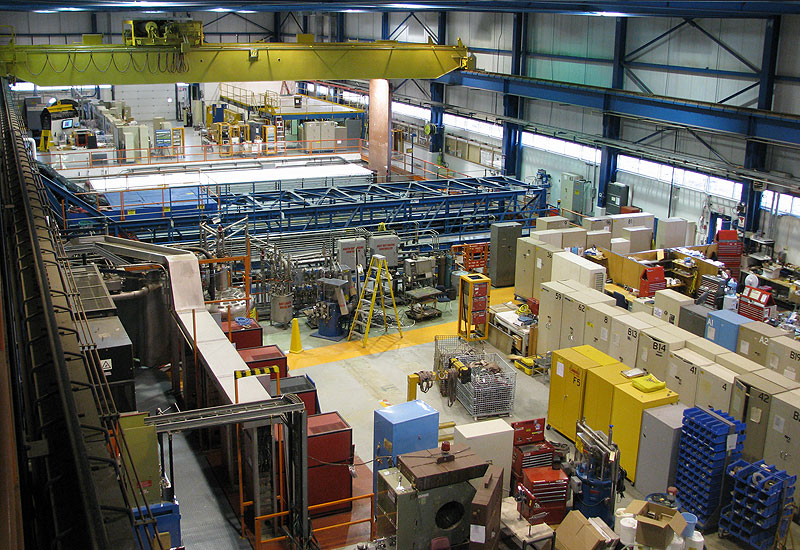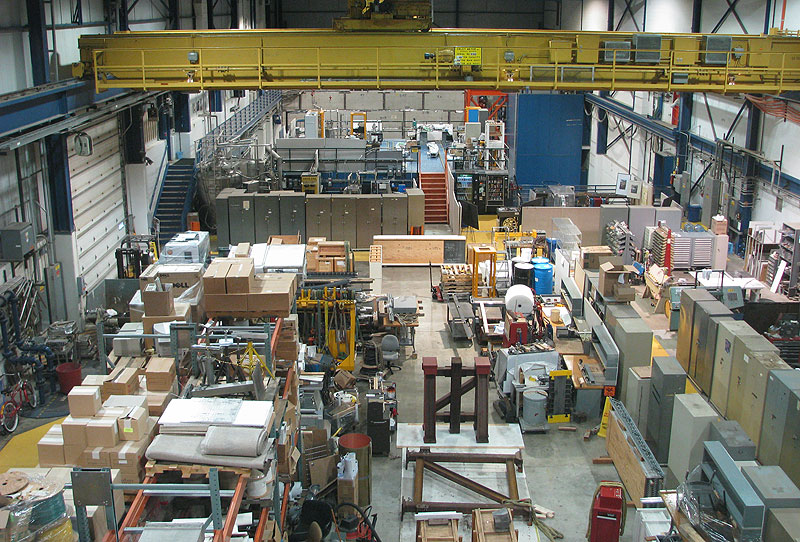CDF and DZero Buildings to House New Projects
On Sept. 30, the CDF and DZero experiments at Fermilab recorded their final particle collisions. Now technicians and engineers are busy preparing the two buildings that supported the collider detectors to accommodate future uses, while preserving the two particle detectors and their control rooms for educational tours that will be offered starting in the fall of 2012.
The 36,000-square-foot CDF assembly building, including its 50-ton crane, will become part of the Illinois Accelerator Research Center. Groundbreaking for the main IARC building, which will rise right next to the western side of the CDF building and connect with it on several levels, will take place on Dec. 16. While the IARC is under construction, the Particle Physics Division will use the east side of the CDF building for detector development and construction, including work on the Mu2e experiment. The CDF collaboration will continue to operate computers on the third floor for the analysis of CDF data.
A portion of the DZero building will serve as an assembly area for the 170-ton detector of a new Booster neutrino experiment called MicroBooNE, while the DZero collaboration continues to use the complex as its home base.
"Space in the high-bay area of the DZero assembly building will be ready for use by the MicroBooNE collaboration by the middle of January 2012," said George Ginther, a manager of the DZero decommissioning plans. The assembly of the MicroBooNE detector and its liquid-argon system will take about a year. When complete, the equipment will be moved into a new building in the Booster neutrino beam line.
At CDF, the clearing out of the building is in progress.
"We have removed about 30 pallets of material so far," said CDF decommissioning manager Jonathan Lewis. "Some things will be reused by other experiments, other things will go into storage at other locations on site, or are being recycled or thrown out. We need to have the west end of the building clear and ready for when the IARC construction gets into full swing in 2012."
In partnership with industry, universities and other laboratories, IARC will use the space to develop accelerator technology, projects and applications, and promote the growth of high-tech industry. The center will work with university partners to create an educational center for accelerator science and technology.
The 6,000-ton CDF and DZero detectors will remain in their collision halls. The CDF collaboration plans to partially pull apart its detector to give visitors a view of the interior. At DZero, workers will remove a large shielding wall to provide visitors a view of the detector. Before public tours can take place, safety improvements will be made to the floors, stairs and lights, which were not designed for tour groups.
Collaborating with CDF and DZero scientists, the Fermilab Education Office is developing tour plans for middle and high school groups.
"This is a fantastic opportunity to show students what it takes to conduct particle physics experiments," said Marge Bardeen, head of the Education Office.




